“All the world’s a stage” – As You Like It by William Shakespeare
Dotted with many characters and players, and trend-setters, social platforms are pulsating with theatrics. What begins as a small buzz soon assumes dramatic proportions with a strong cascading effect. Alliterations, hashtags, and a swelling rank of followers – so goes the flow.
The latest to join the fray is “quiet quitting”.Trending on TikTok, it simply means a ‘no’ from young professionals to the hustle culture, which is characterized by a significant overlap between work and personal life. A phenomenon exploding on the face of corporate leaders as Gen Z enters the workforce and millennials experience fatigue and burnout, it indicates a rejection to overextending at the workplace and doing just the needful – nothing extra, no overtime. It basically reflects a growing disengagement at the workplace.
What has triggered the trend?
Disengagement is not new. The realities of job have hit each generation that has joined the workforce in the past, hard. Dealing with difficult bosses, sticky situations and coping with small indignities, and most of all, stretching to accommodate demands has never been easy.
The same holds true now too. But certain factors are colluding today to give the situation a peculiar twist. First, of course, the pandemic that has led to irreversible changes in the nature of occupations and the rise of gigs; (ii) a relatively strong labor market that has strengthened the belief in workers that they have the power to negotiate and can push back; (iii) rise of social media; and (iv) technological innovations that are only taking social media interactions to the next level. Players are increasingly using hashtags and videos to emote and connect with a wider audience that resonates the sentiment.
Data also indicates growing disengagement at work. According to a new survey by Gallup, nearly 18% of employees in the US are “actively disengaged” at work, the highest level since 2013. Over 50% are just “not engaged”, and these are the quiet quitters. Demography-wise, remote and hybrid workers under the age of 35 are driving the trend. Moreover, only 32% of workers describe themselves as involved and enthusiastic at work, compared to 36% in 2020.
In a nutshell, the underlying sentiment in the post-pandemic phase is that personal interests/life is as important as those of the organization employees are working for.
Is the trend confined to the junior level employees only?
Perhaps not.
Disconnection with the workplace is visible at the level of managers, too. Gallup’s findings show that only 1 in 3 managers feel emotionally or psychologically engaged at work; plus, this group is witnessing one of the biggest declines in engagement, attributable to pandemic-related stresses. According to Jim Harter, chief scientist for Gallup’s workplace management practice, as quoted on CBS MoneyWatch, managers who are disconnected with the workplace could have a cascading effect in terms of quiet quitting on their direct reports.
Do you need to worry about it?
Yes, because of the high negative outcomes.
Disengagement is reflective of work culture, of friction at workplace that the leadership can ill-afford to ignore. At the end, the efficiency of workers and productivity is at stake. Plus, there is the looming risk of losing workers to competitors. So, while stepping back may provide a much-needed respite to an employee, and doing less may seem satisfying in the short term, this could pose a serious challenge in the long term, especially with an economic slowdown supposedly hot on the heels.
How to address quiet quitting?
Identify the root of the problem: As the first step to combat the issue, leadership needs to understand what is causing the slack – is it about a bad boss or reporting manager, or is it about the work environment?
The relationship between an employee and their reporting manager plays a key role in determining the growth of the individual and thereby their retention. More often than not, it has been seen that employees leave an organization because of their managers.
A GoodHire survey titled Horrible Bosses: A Survey of the American Workforce showed that managers play a key role in employees’ decision to quit or continue. More than 80% of workers across 10 industries said that they would (potentially) leave their jobs due to a bad manager, with poor behavior including not being open or honest, micromanaging, and not respecting personal time or space.
Interestingly, another term doing rounds on the internet is “quiet firing”. According to data provided by Similarweb Keyword Search, “quiet firing” as a search totaled16,300 in August 2022, indicating a sizeable count.
Is it a clever play on words? Not quite.
It means creating such conditions for an employee, say through discrimination, that the person prefers to leave, instead of having to fire the individual outright. Managers commit a grave error when they choose to play favorites. Exhibiting a less than fair behavior or propping one person up against the other does not settle well at all, with the one receiving the lesser treatment. It, therefore, has a direct bearing on quiet quitting.
It is important that a manager treats his reports with empathy and knows how to strike the right balance between getting work done and concerns for their needs.
With regard to the work environment, quiet quitting could be driven by the absence of some or many of these attributes: meaningfulness/challenging nature of the job; scope for work-life balance; rewards & recognition; compensation & benefits; and overall culture.
The next step, therefore, is to build the right workplace culture, which will include taking care of the reporting requirements and setting the right precedent on this front too.
Address upfront: The key is to communicate effectively – at all times. As soon as the management notices the trend developing, start having honest conversations with your managers, staff, and the people sending signals of quiet quitting.
Especially while addressing managers, find out how they are connecting or dealing with their reports, or the type of discussions they have. If you sense any kind of bias that could prove counterproductive, discuss it threadbare, stressing on the importance of neutrality.
With potential quiet quitters or those actively engaging in it, keep conversations non-confrontational and more concern-centric.
Above all, have conversations regularly, not as a one-off exercise. According to Communication strategist GenelleAldred, as quoted in an article in UK-based magazine Management Today, “with quiet quitting, open and honest communication is the secret weapon.”
Know your employees: Generation Z is different from the previous generations that have worked. Their thought process is different, and with the kind of connectivity afforded by internet and availability of data, there are several influences working on them. They are spoilt for choice, given the plethora of ideas and options available. They are more aware and not willing to compromise on their aspirations.
So, it is important to understand what they want from their jobs, their hobbies, what are the values they aspire for in a work culture. Accordingly, incorporate this into your work environment.
Build a motivating work culture: To many, work gives a sense of purpose and fulfilment. This underlines the importance of a culture of trust and growth at workplace. Here are some principles as per a study by Forbes(cited in a blog on WhistleBlower Security, a Canada-based ethics reporting and case management provider) that are critical to building trust and goodwill among employees:
Reliability/Dependability: Being true to your words and living up to commitments
Transparency: Sharing information from time to time and avoiding unnecessary secrecy
Competency: Ensuring positions are manned by the right, competent people
Authenticity: Making promises you can keep, and walking the talk
Fairness: Providing equal opportunities to all at the same level; ensuring no one is a victim of favoritism
Openness: Leadership coming out in the open and admitting when a wrong has been done or issuing apology on time
There are no quick fixes. Bringing about a change depends on effective strategizing based on keen observation and dedicated implementation – and this is what leadership should aim at when noticing any trend, especially one that could have adverse repercussions.
To Conclude
Trends on social media are like waves, one followed by another. This is precisely the reason the focus on topics trending on social platforms tends to be short-lived. However, it would be naïve to paint all trends with the same brush and be dismissive about it.
This is because it may happen that over a period, some momentary waves may cough up an important cause, ignoring which may prove costly. Quiet quitting seems to fall into this category for now. A developing trend, it needs to be observed and understood.
While there is every reason for the leadership to note it and address promptly, employees too – especially Gen Z – need to tread watchfully. They should be mindful of its long-term implications for their career and growth. What is posted once on social media is difficult to erase from its memory. So, with social media platforms serving as a base for recruiting, it is better to think twice about how a quiet quitting post may reflect on the individual in the future. There is no harm in setting boundaries, but this should be done judiciously (for instance, maybe during conversations or interviews with a prospective employer).
That said, longevity of the trend or not, an engaging work culture with work-life balance is the key to thriving operations. Given the state of the job market and amid the fluid macro environment, it is advantage Gen Z who have made it clear that they want aNo BS* Workplace [(Burnout & Stress)*; courtesy thought-leader Ira Wolfe]. (For incisive insights and guidance on recruitment and talent acquisition, connect with Sandeep Mitra, Managing Director at VBeyond Corporation.)


